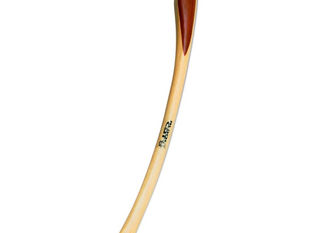
Our Golden Jackals and their neighbours have always been the focal point of these field notes. They live in the green belt behind the sandy strip on which our little research camp is based but infront, there is the big blue river Danube.
When at a Danube camp – such as ours at Km 727 – there is rarely more than a few moments before one sees some craft sailing up or down the river. The most common sight are the big convoys, hundreds of metres long. They usually carry bulk goods in quantities to fill up a freight train.

The whole composition, comprising sometimes 10 or even more 70 m barges, tied to each other in rows of three, is pushed from behind by a push-tug. Occasionally, this box-like craft, hardly more than a floating engine, can be seen sailing by itself, in a hurry to get attached to a waiting convoy.

The other often seen big craft are the tourist cruisers, the ‘long ships’. These are floating luxury hotels, the long and slender version of ocean cruisers. Not many people can be seen on their decks. Those who are there appear to look rather bored as they watch the endless lines of poplar trees on both banks. Still, this seems to be a booming business, targeting the euro in the Western OAP’s purse. One sees ships mostly under Norwegian or Swiss flags, less often Austrian or German.

The relaxation and peace around the floating hotels, with their mainly elderly clientele, is at times harshly broken by reminders of the raging war not far away. For the time being at least, these come in the form of gun-boats out for their drills.

To us at least, the world of small craft has always been the more interesting. One begins here with the traditional Danube fishing boat. It is a nearly flat-bottomed wooden creation, honed down to the last detail by ages of experience. Its main purpose is to allow the setting and retrieval of nets, at times hundreds of metres long.

Then there is the pleasure craft. Its flashier representatives are the motor
yachts of the more affluent boaters.

The most interesting are artistic creations of spirited design.

Echoes of the Viking route down to Byzanthium can also be seen.


Finally, there are the canoes of the Danube Regatta (TID)1. These float by in mid-July. An ancient Pouch can be occasionally seen among them.

About TID see: Kanu-Tour International Danubien







This is exactly how a guide book about an interesting location or subject should be written. Informative, detailed, inspiring and, yet, devoid of jargon.
The stories covered, both the inspiring and sad, are a reminder of how precious nature is - to all of us. It also underlines how important it is for society to acknowledge that nature, and everything within it, is a gift - which is not ours to misuse or destroy - and something precious that is merely lent to us during our lifetimes. Consequently, it is also something to be cherished, nurtured and left - intact and enhanced - for the appreciation and enjoyment of those that follow us.
Congratulations to everyone involved in this most commendable undertaking. Long may it continue.